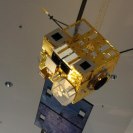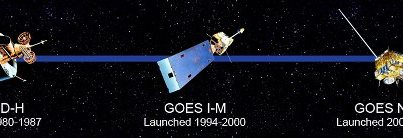Did you ever wonder how weather forecasters figure out what's going on in the skies? Information about the big picture comes from satellites and weather balloons, and computer models, but finer-scale information available in real time comes
from local Doppler radars at 160 sites around the United States. Yesterday, in a celebration at NOAA’s National Weather Service Forecast Office in Burlington, Vt., NOAA marked the halfway point of the most significant enhancement made to the nation’s NEXRAD radar network since Doppler radar was first installed in the early 1990s,
http://1.usa.gov/SI3IL7. Upgrading our network of 160 Doppler radars to new dual-polarization technology (referred to as “Dual-Pol”) will significantly improve NOAA
U.S. National Weather Service products and services ─ specifically for heavy rain, winter storms, and severe thunderstorms, including tornadoes. The new technology will also help detect hazards to aircraft such as icing conditions and birds. (This clever video gives a great overview of how Dual-Pol works:
http://1.usa.gov/SIi2R1). We are on track to finish upgrading all of our radar sites by Summer 2013. Ultimately, this radar upgrade is one more essential step in our efforts to build a Weather-Ready Nation [
http://1.usa.gov/PbzJHQ], and it’s another compelling example of the integrated science and service NOAA delivers to the nation. My sincere congratulations and thanks to all NOAA personnel who are involved in this important endeavor.
(NOAA image: A radar tower at a NOAA National Weather Service Forecast Office.)















![Photo: Did you ever wonder how weather forecasters figure out what's going on in the skies? Information about the big picture comes from satellites and weather balloons, and computer models, but finer-scale information available in real time comes from local Doppler radars at 160 sites around the United States. Yesterday, in a celebration at NOAA’s National Weather Service Forecast Office in Burlington, Vt., NOAA marked the halfway point of the most significant enhancement made to the nation’s NEXRAD radar network since Doppler radar was first installed in the early 1990s, http://1.usa.gov/SI3IL7. Upgrading our network of 160 Doppler radars to new dual-polarization technology (referred to as “Dual-Pol”) will significantly improve NOAA U.S. National Weather Service products and services ─ specifically for heavy rain, winter storms, and severe thunderstorms, including tornadoes. The new technology will also help detect hazards to aircraft such as icing conditions and birds. (This clever video gives a great overview of how Dual-Pol works: http://1.usa.gov/SIi2R1). We are on track to finish upgrading all of our radar sites by Summer 2013. Ultimately, this radar upgrade is one more essential step in our efforts to build a Weather-Ready Nation [http://1.usa.gov/PbzJHQ], and it’s another compelling example of the integrated science and service NOAA delivers to the nation. My sincere congratulations and thanks to all NOAA personnel who are involved in this important endeavor.
(NOAA image: A radar tower at a NOAA National Weather Service Forecast Office.)](https://webarchive.library.unt.edu/web/20120913084419im_/http://sphotos-b.xx.fbcdn.net/hphotos-prn1/c89.0.403.403/p403x403/542387_10151060340888492_1769135478_n.jpg)




